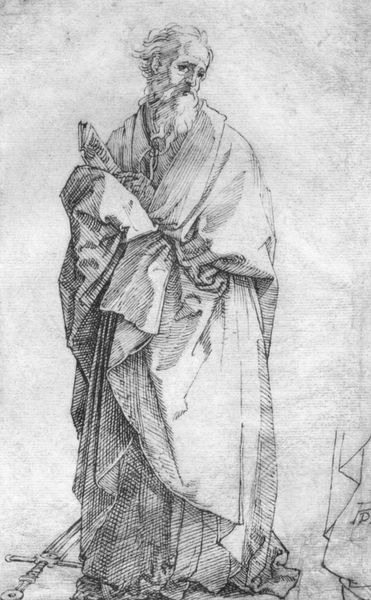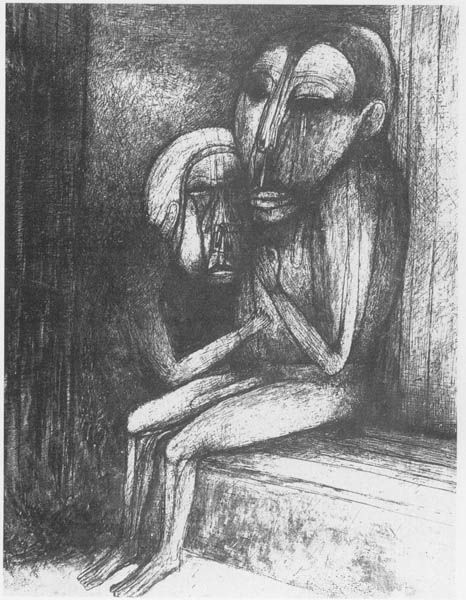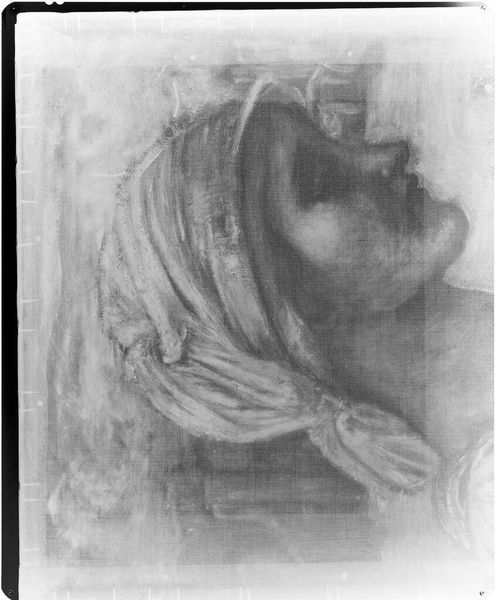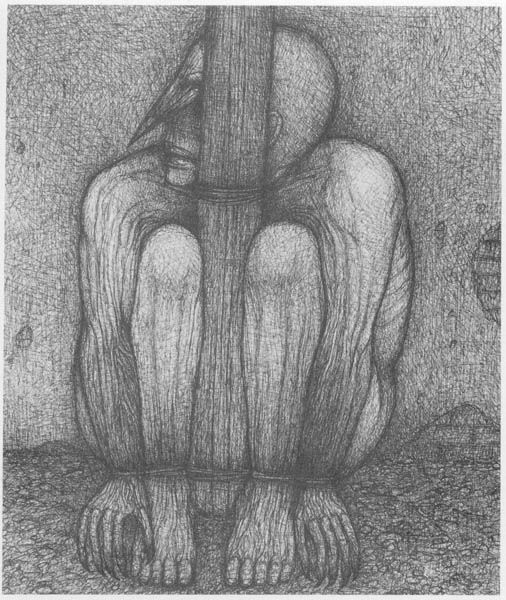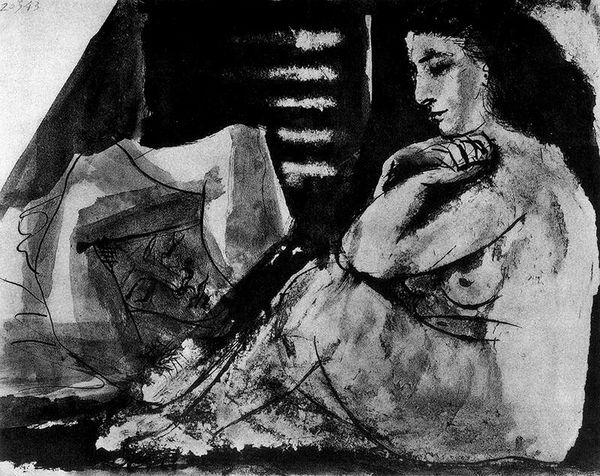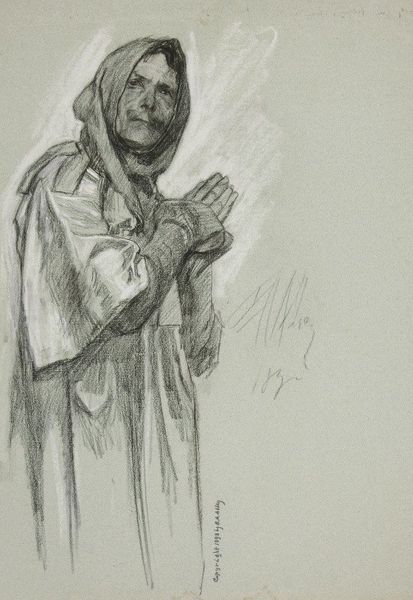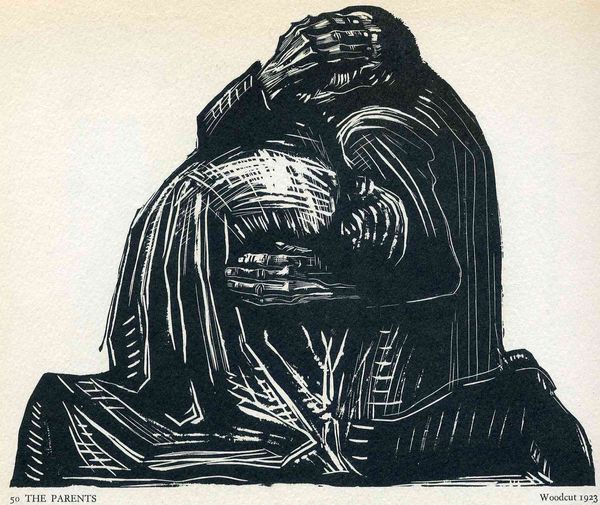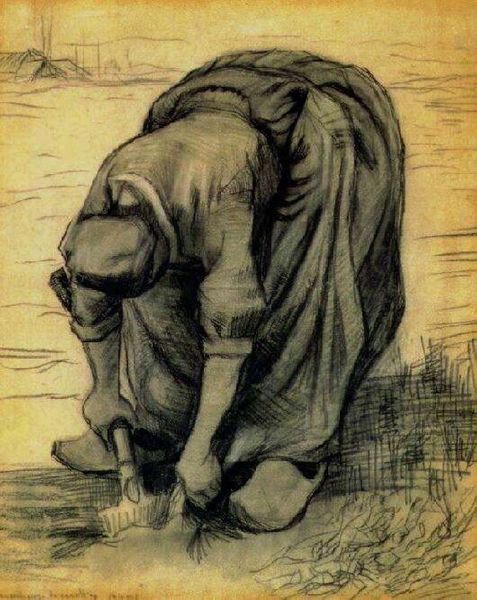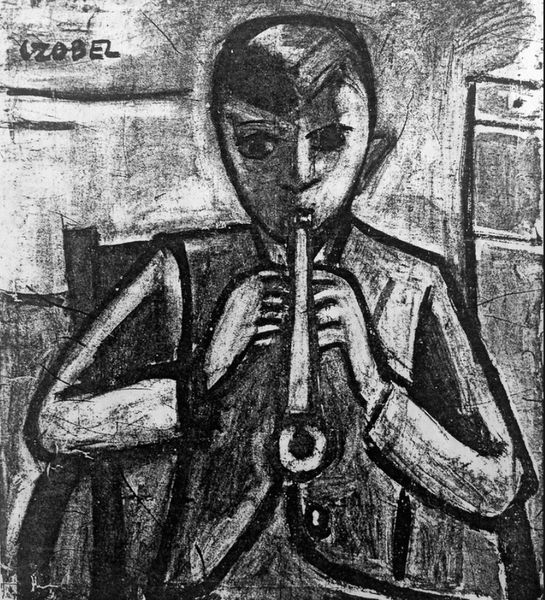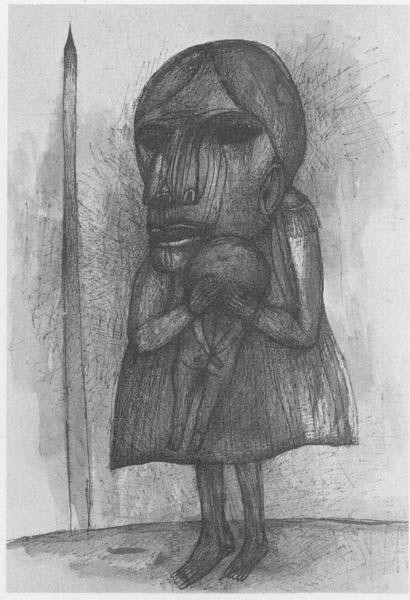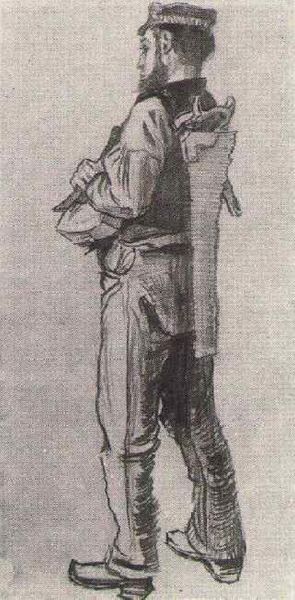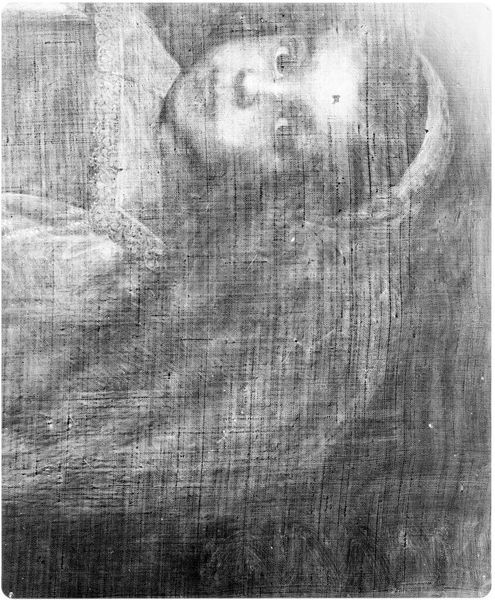
drawing, pencil, graphite
#
portrait
#
pencil drawn
#
drawing
#
pencil sketch
#
charcoal drawing
#
pencil drawing
#
pencil
#
symbolism
#
graphite
#
portrait drawing
#
history-painting
#
graphite
Copyright: Public domain
Editor: Here we have John Duncan's "Deirdre of the Sorrows," a drawing done in pencil. It feels immediately tragic, almost like a still from a play. What do you make of this work? Curator: Considering Duncan’s engagement with Celtic Revivalism, it's crucial to look at this drawing through a material lens. How does the choice of pencil—a readily available and relatively inexpensive medium—relate to the accessibility and dissemination of Celtic stories? Editor: That's an interesting point! It feels almost deliberately understated, the simplicity of the pencil versus the complexity of the story it's telling. Curator: Exactly! The use of graphite enables Duncan to connect to a broader audience beyond the elite circles who traditionally consumed "high art". Notice, too, the emphasis on costume, likely drawn from specific material sources and hinting at the socio-economic context of the legend. Editor: I see what you mean. The patterned shawl and headscarf look carefully rendered, suggesting attention to specific textile traditions, rather than some romanticized notion of Celtic dress. Curator: Precisely! It's about grounding the myth in material culture, making it tangible and relatable. Consider how this portrayal deviates from idealized representations prevalent in academic painting, focusing instead on the textures and patterns achievable through the deliberate labor of drawing. What implications arise by this production? Editor: The material constraints of a drawing like this, versus, say, an oil painting, might democratize the image. Maybe even connect it to a different, broader market. It offers so much context about production that changes the interpretation of the scene entirely. Curator: Precisely! Shifting our perspective from aesthetics alone allows us a much richer interpretation. Editor: Definitely! I never thought about the material aspect of this picture this way, and it opened new pathways for research.
Comments
No comments
Be the first to comment and join the conversation on the ultimate creative platform.
